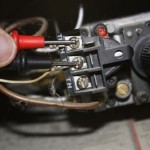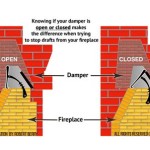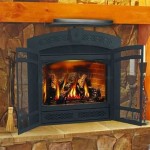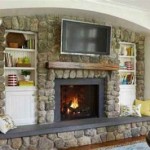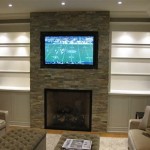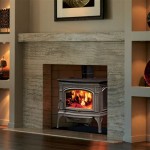How to Make a Fireplace Mantel Surround
A fireplace mantel surround serves as a focal point in a living space, enhancing both the aesthetic appeal and architectural definition of a fireplace. Constructing a custom mantel surround allows for personalized design, material selection, and integration with existing décor. This article provides a comprehensive guide to the process, encompassing design considerations, material choices, construction techniques, and installation procedures.
Planning and Design
The initial phase of building a fireplace mantel surround involves meticulous planning and design. Careful consideration of the fireplace's dimensions, the room's style, and personal preferences is crucial for a successful outcome. This stage dictates the overall aesthetic and functionality of the mantel.
First, measure the fireplace opening precisely. Record the width and height of the firebox, as well as the distance from the floor to the top of the firebox and any existing brickwork or facing. These measurements will determine the overall dimensions of the mantel surround and its relationship to the fireplace itself. Accurate measurements are non-negotiable as even minor discrepancies can lead to significant problems during installation.
Next, consider the architectural style of the room. Is it traditional, modern, rustic, or eclectic? The mantel surround should complement the existing décor and enhance the room's overall aesthetic. For a traditional setting, a detailed mantel with ornate carvings and a substantial presence might be suitable. In a modern space, a minimalist design with clean lines and simple profiles may be more appropriate. Rustic settings benefit from mantels made from reclaimed wood or featuring natural stone accents.
Sketch several design options, exploring different shapes, sizes, and embellishments. Consider the proportions of the mantel in relation to the fireplace and the room. A mantel that is too large can overwhelm the space, while one that is too small can appear insignificant. It can be helpful to create a scale drawing or use computer-aided design (CAD) software to visualize the finished product. These design sketches should include detailed measurements of each component, facilitating accurate material calculations and construction.
Also, factor in the intended function of the mantel. Will it serve primarily as a decorative element, or will it also provide storage or display space? Shelves, cabinets, and other features can be integrated into the design to enhance functionality. If the mantel is intended to house electronic components, such as a television or sound system, ensure adequate space and ventilation are incorporated into the design.
Fire safety is a paramount concern in the design process. Consult local building codes and regulations to ensure the mantel surround meets all required clearances from the firebox opening. Non-combustible materials may be required in certain areas, particularly around the firebox. Adherence to these codes is essential to prevent fire hazards and ensure the safety of the occupants.
Material Selection and Preparation
The choice of materials significantly influences the appearance, durability, and cost of the fireplace mantel surround. A wide range of options are available, each with its own characteristics and suitability for different styles and budgets. The selection process should consider both aesthetic preferences and practical considerations.
Wood is a popular choice for mantel surrounds due to its versatility, affordability, and ease of workability. Softwoods, such as pine and fir, are relatively inexpensive and easy to cut and shape. Hardwoods, such as oak, maple, and cherry, offer greater durability and a more refined appearance but are typically more expensive. When selecting wood, ensure it is properly dried and free from knots, cracks, and other imperfections that could compromise its structural integrity and aesthetic appeal.
Stone, including marble, granite, and limestone, provides a luxurious and elegant look. Stone mantels are exceptionally durable and fire-resistant, making them a long-lasting investment. However, stone is also heavier and more difficult to work with than wood, requiring specialized tools and techniques. Faux stone, made from concrete or resin, offers a more affordable alternative that replicates the appearance of natural stone without the weight and cost.
Brick is another common material, particularly for rustic or traditional fireplaces. Brick mantels can be constructed from new or reclaimed bricks, offering a wide range of colors and textures. Brick is fire-resistant and durable, but it can be difficult to cut and shape. Mortar is required to bond the bricks together, and the finished mantel may require sealing to protect it from moisture and staining.
MDF (medium-density fiberboard) is a cost-effective option for creating intricate designs and smooth surfaces. MDF is easy to cut and shape, and it accepts paint and other finishes readily. However, MDF is not as durable as solid wood or stone, and it is susceptible to moisture damage. It is best suited for decorative elements and areas that are not exposed to high levels of humidity.
Once the materials have been selected, prepare them according to the design specifications. Cut the wood, stone, or brick to the required dimensions, using appropriate tools such as saws, grinders, and chisels. Ensure all cuts are precise and clean, and sand or smooth any rough edges. Pre-drill holes for screws or fasteners, as needed. Applying a primer or sealant to the materials before assembly can help protect them from moisture and enhance their durability.
Construction and Installation
The construction and installation phase involves assembling the individual components of the mantel surround and securing it to the fireplace. This stage requires precision, attention to detail, and a thorough understanding of construction techniques.
Begin by assembling the main frame of the mantel surround. This typically consists of a top shelf, side supports, and a base. Use screws, nails, or construction adhesive to join the components together, ensuring all joints are square and secure. Clamps can be used to hold the pieces in place while the adhesive dries. Reinforce the frame with corner braces or other structural supports, as needed.
Next, attach any decorative elements, such as moldings, carvings, or panels. These can be glued, nailed, or screwed to the frame, depending on the material and design. Ensure all decorative elements are properly aligned and evenly spaced. Fill any gaps or imperfections with wood filler or caulk, and sand smooth. Applying multiple coats of paint or stain, followed by a clear sealant, can enhance the appearance and protect the finish.
Before installing the mantel surround, prepare the fireplace wall. Remove any existing trim or facing, and clean the surface thoroughly. Ensure the wall is flat and level, and repair any cracks or imperfections. If necessary, install furring strips to create a secure and even surface for attaching the mantel surround.
Position the mantel surround against the fireplace wall, ensuring it is centered and aligned. Use a level to verify that the mantel is plumb and square. Secure the mantel to the wall using screws or construction adhesive. Drive the screws into the wall studs or masonry, ensuring they are long enough to provide a secure hold. Conceal the screw heads with wood filler or decorative caps.
After the mantel surround has been installed, inspect it carefully for any gaps or imperfections. Caulk any seams or joints to create a seamless and professional finish. Apply a final coat of paint or sealant, as needed. Install any additional features, such as shelves, cabinets, or lighting. Ensure all electrical connections are properly wired and safely grounded.
Once the installation is complete, allow the adhesive and sealant to dry completely before placing any objects on the mantel. Inspect the finished mantel surround to ensure it meets all safety standards and regulations. A well-constructed and properly installed fireplace mantel surround will enhance the beauty and functionality of the fireplace for years to come.

Diy Fireplace Mantel Designatedspacedesign Com

Building An Easy Modern Fireplace Mantel Young House Love

Diy Fireplace Mantel And Surround Jenna Kate At Home

Easy Fireplace Mantel Diy

How To Build A Faux Fireplace Mantel And Surround The Home Depot

Diy Wood Beam Mantel

How To Build A Diy Fireplace Mantel Fixthisbuildthat

Faux Fireplace Mantel Surround

19 Amazing Diy Fireplace Mantel Ideas To Inspire You

Faux Fireplace Mantel Surround Rogue Engineer
Related Posts

